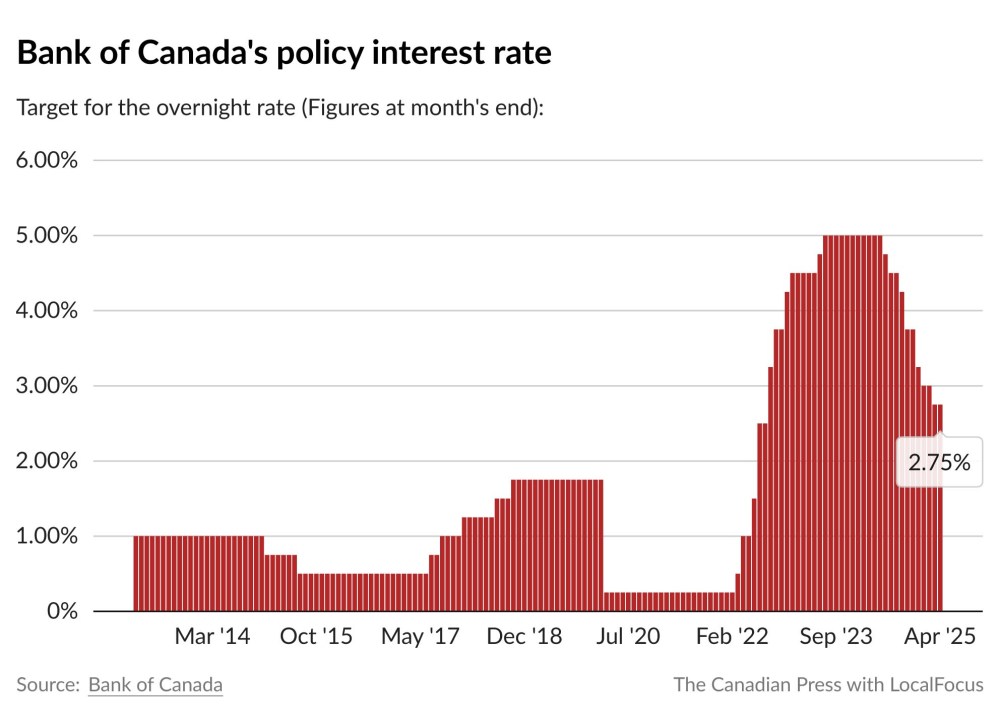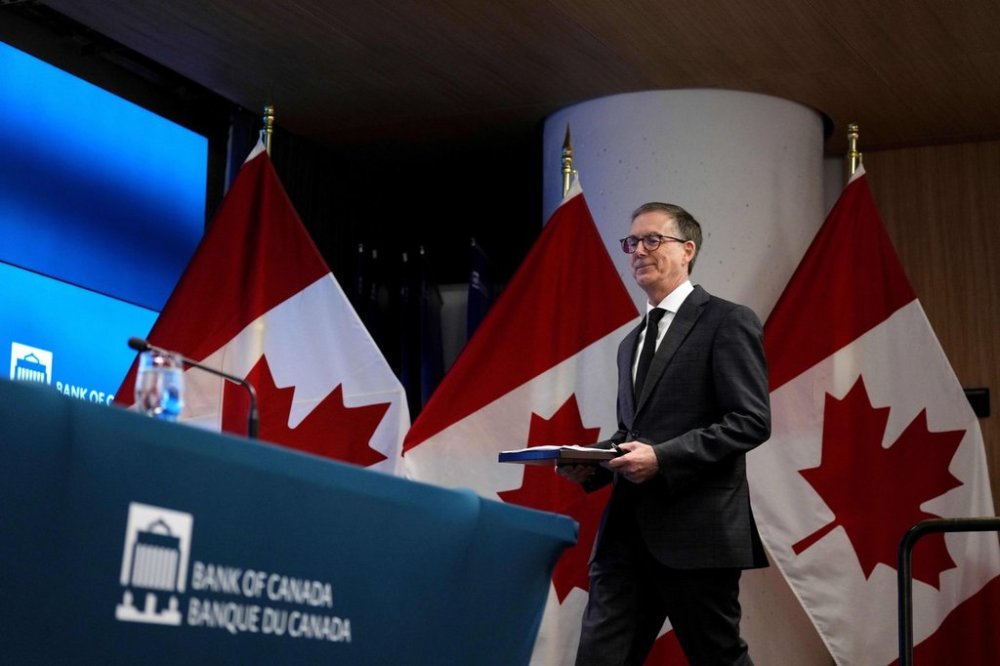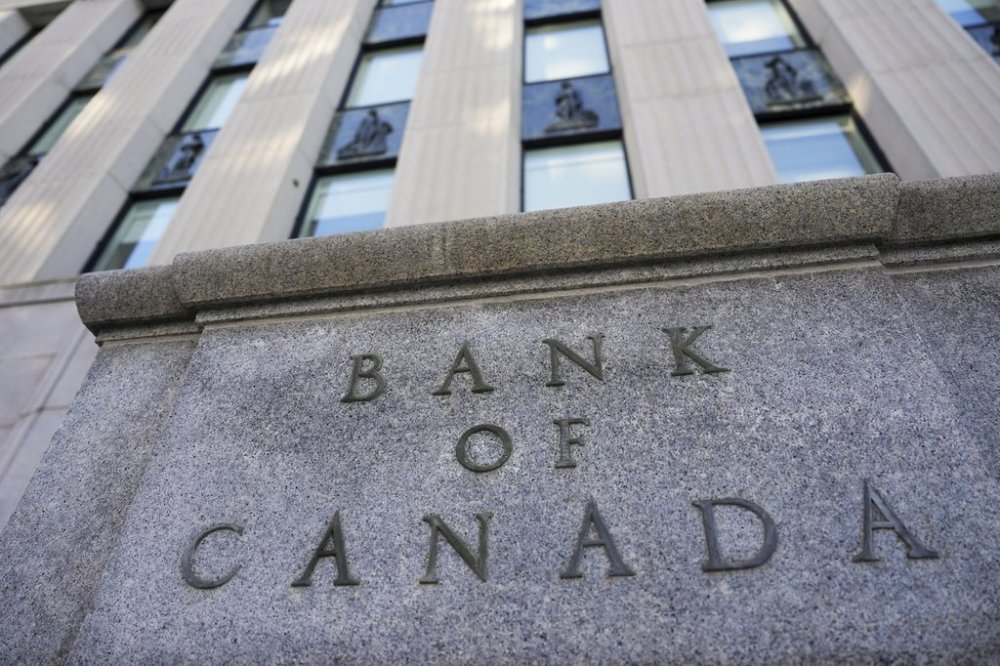Lacking clarity on U.S. trade, Bank of Canada keeps ‘powder dry’ with rate hold
Advertisement
Read this article for free:
or
Already have an account? Log in here »
To continue reading, please subscribe:
Monthly Digital Subscription
$0 for the first 4 weeks*
- Enjoy unlimited reading on winnipegfreepress.com
- Read the E-Edition, our digital replica newspaper
- Access News Break, our award-winning app
- Play interactive puzzles
*No charge for 4 weeks then price increases to the regular rate of $19.00 plus GST every four weeks. Offer available to new and qualified returning subscribers only. Cancel any time.
Monthly Digital Subscription
$4.75/week*
- Enjoy unlimited reading on winnipegfreepress.com
- Read the E-Edition, our digital replica newspaper
- Access News Break, our award-winning app
- Play interactive puzzles
*Billed as $19 plus GST every four weeks. Cancel any time.
To continue reading, please subscribe:
Add Free Press access to your Brandon Sun subscription for only an additional
$1 for the first 4 weeks*
*Your next subscription payment will increase by $1.00 and you will be charged $16.99 plus GST for four weeks. After four weeks, your payment will increase to $23.99 plus GST every four weeks.
Read unlimited articles for free today:
or
Already have an account? Log in here »
Hey there, time traveller!
This article was published 16/04/2025 (230 days ago), so information in it may no longer be current.
OTTAWA – The Bank of Canada doesn’t know quite yet how to navigate monetary policy amid constantly shifting trade turbulence with the United States, so the central bank kept its powder dry with an interest rate hold on Wednesday.
The central bank held its policy rate steady at 2.75 per cent, the first time it has left the key rate unchanged following seven consecutive cuts since June.
Bank of Canada governor Tiff Macklem made clear that the trade disruption from south of the border was the clear focus of the decision.
“The dramatic protectionist shift in U.S. trade policy and the chaotic delivery have increased uncertainty, roiled financial markets, diminished global growth prospects and raised inflation expectations,” he said at a press conference.
Macklem said the central bank weighed a hold and a cut in its latest decision, as it did at in March. Though tariffs have been imposed and since adjusted in between decisions, he said the outcome of the dispute is still uncertain.
“The future is no clearer. We still do not know what tariffs will be imposed, whether they’ll be reduced or escalated, or how long all of this will last,” he said.
The Bank of Canada raises the policy rate when central bankers fear inflation could accelerate and lower it when they want to stimulate economic growth.
But both scenarios are in play right now amid what Macklem called “considerable uncertainty” tied to the United States’ global tariff campaign.
“We decided to hold our policy rate unchanged as we gain more information about both the path forward for U.S. tariffs and their impacts,” Macklem said.
Randall Bartlett, deputy chief economist at Desjardins, said the central bank knew that both the economy and inflation were tracking hotter than initially expected in the first quarter of the year, giving enough justification for a rate pause and offering the flexibility for a return to cuts if needed.
“The bank decided to keep its powder dry, just in case it needs to provide that additional support in the case of a downside scenario or doesn’t need that additional support in case we get a continued resolution of the trade tensions,” he said.

The Bank of Canada’s decision makers are not focused on one likely path forward and are instead preparing for a range of possible outcomes, Macklem said, not unlike many Canadians trying to plan their own finances in an uncertain time.
The central bank outlined a pair of economic scenarios alongside the rate decision that officials stressed should not be viewed as forecasts.
One sees the tariffs and threats negotiated away quickly and the economy stall, but escape with limited damage. Inflation would ease to 1.5 per cent for most of the year – largely thanks to the elimination of the consumer carbon price – before rising back to the central bank’s two per cent target.
The other example envisions a more protracted global trade war that sends Canada into a year-long recession, an outcome that Macklem said would be an “unprecedented shock” to the Canadian economy.
This scenario assumes the United States imposes tariffs of 12 per cent on all Canadian goods with a higher 25 per cent on motor vehicles and parts and another 25 per cent import tax applied globally; Canada also responds here with similar tariffs on a selection of U.S. goods.
Canadian real gross domestic product contracts in this projection for four consecutive quarters, averaging declines of 1.2 per cent, and the U.S. tariffs “permanently reduce Canada’s potential output and its standard of living,” the report reads.
That outcome also sees inflation rise, topping three per cent in 2026, making the Bank of Canada’s job that much harder.
The central bank noted these two scenarios represent only a slice of the many possible outcomes. But the governing council used this double-barrelled framework to make its latest interest rate decision, attempting to set monetary policy that would best suit either outcome – in this case, a rate hold.

Despite the decision to leave rates unchanged, TD economist James Orlando said the tone of the announcement and Monetary Policy Report seemed almost consistent with a cut.
“It highlighted the downside risks to the economy, with both scenarios showing a level of weakness that is deserving of further rate cuts,” he wrote in a report on the decision.
The early tariffs and threats have already hurt business and consumer confidence in Canada, with some manufacturers laying off workers.
Inflation meanwhile cooled to 2.3 per cent in March, in part thanks to falling gas prices and weaker travel demand to the U.S. amid the trade war.
Orlando expects the Bank of Canada will resume cutting interest rates at its next meeting on June 4.
CIBC chief economist Avery Shenfeld said in a note Wednesday that he expects a pair of back-to-back quarter-point cuts from the Bank of Canada in June and July.
Bartlett, too, expects that the central bank has “a few more rate cuts in the chamber” before the end of the easing cycle. He said that pace of cuts could accelerate with as much as a half-point cut in June, but the Bank of Canada could also opt to pause again.
“It’s very much dependent on what happens over the next six weeks in terms of U.S. policy,” he said.

Money markets on Wednesday priced the odds of a rate or a cut at the Bank of Canada’s next meeting as a virtual tie, according to LSEG Data & Analytics.
The Bank of Canada signalled it would “proceed carefully” in setting future rates and will be watching to see how much the tariffs reduce demand for Canadian exports, dampen spending from businesses and consumers, how quickly new costs are passed on to customers and how inflation expectations evolve.
Bartlett said that, without much guidance from the Bank of Canada about a future path for rates or the economy broadly, Canadians ought to take a page from the central bank and try to keep a “flexible” approach to their own finances.
“At the end of the day, much like the bank, people need to have a Plan A and a Plan B for any eventuality and possible outcomes in between those two plans,” he said.
This report by The Canadian Press was first published April 16, 2025.
History
Updated on Wednesday, April 16, 2025 9:08 AM CDT: Adds graphic



